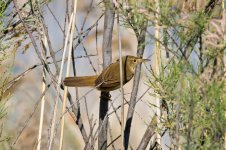I saw this bird in the Ebro Delta (Spain), during the first week of July. It's a coastal area with several ponds and many other water landscapes.
There are three pictures. The first two belong to the same bird. The last one is a different bird, although it might be the same species.
https://drive.google.com/open?id=1waEKYeD7RtMOCd8EnmRZK3OQCu8w4M1b
There are three pictures. The first two belong to the same bird. The last one is a different bird, although it might be the same species.
https://drive.google.com/open?id=1waEKYeD7RtMOCd8EnmRZK3OQCu8w4M1b






